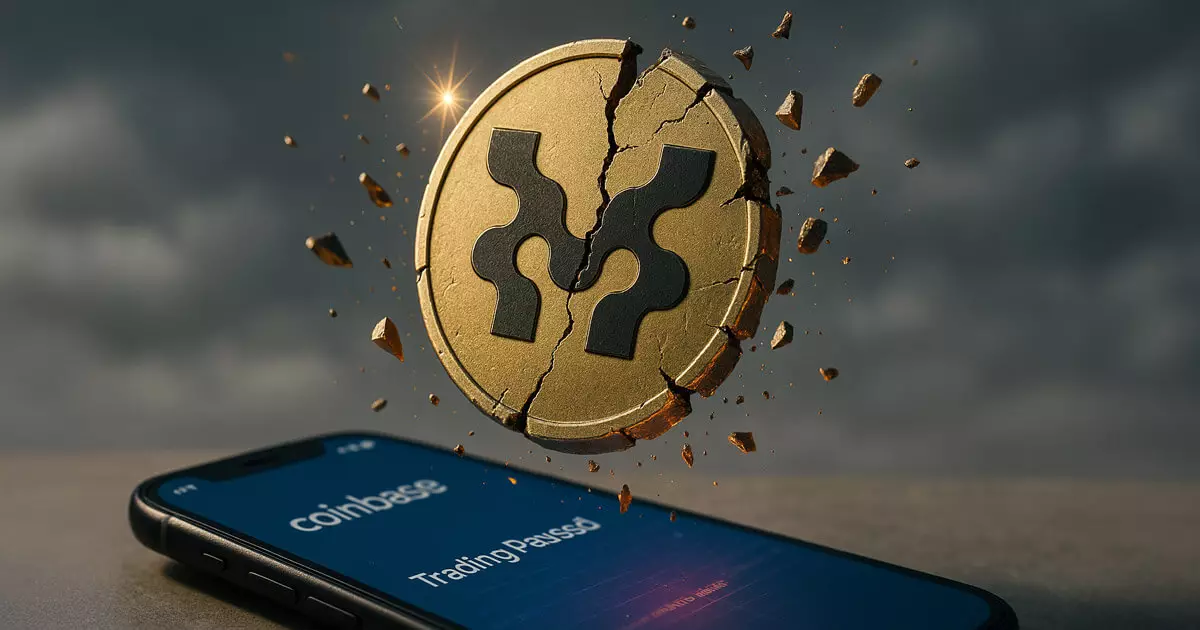The recent stunning decline of the MOVE token has sent shockwaves through the cryptocurrency community, marking a catastrophic plunge to its lowest point in history. The catalyst for this seismic shift was Coinbase’s declaration on May 1 that it would cease trading the token after May 15, ostensibly due to MOVE’s failings to meet the exchange’s listing standards. Such a move highlights the unforgiving nature of the crypto market, where a single decision can erase significant value virtually overnight. The token, which previously held some promise within the Ethereum-based Movement Network, saw its worth plummet by a staggering 23%, dragging down its value to $0.18 and culminating in a near 84% drop from its December 2024 peak of $1.21.
The severity of the situation draws attention to a critical aspect of the crypto landscape: the delicate balance of perception and reality. Regulatory scrutiny combined with market manipulation fears has sparked a perfect storm for MOVE. It’s a painful reminder that in the world of digital currencies, reputations and market confidence can be as volatile as trading volumes.
Allegations of Market Manipulation: Trust in Crisis
The Movement Network now grapples with not just the loss of market value but also the erosion of trust. The firm suspended its co-founder, Rushi Manche, amid allegations surrounding questionable market-making practices that purportedly led to this tragic downfall. Such drastic measures reflect the need for accountability in an ecosystem often criticized for its lack of transparency. The subsequent investigation into these activities, which originated from Binance freezing funds related to a mysterious market maker, underscores the pressing concerns regarding ethical practices in cryptocurrency trading.
While the Movement Labs have taken steps to mitigate the fallout, such as clear distancing from the implicated market maker and initiating a $38 million buyback, these actions may appear too little, too late. The perception of a “cover-up” or, at best, gross negligence can severely undermine a project’s credibility. Manche’s public admission of trust missteps and “bad actors” comes off as an admission of systemic flaws rather than a streamlined approach to governance. There’s a critical need for transparency, but when founders turn cryptic in their explanations, it escalates rather than alleviates fears, further driving potential investors away.
Rebuilding Efforts: A Mountain to Climb
In the wake of this turmoil, the Movement Network has engaged Groom Lake, a web3 intelligence firm, to conduct a thorough audit and recommend governance reforms. This initiative could serve as an important step, but the inherent skepticism will linger. Temporary fixes will not mend the severe dent to the project’s reputation. Investors now demand more than hollow reassurances; historical performance leaves a bitter taste, creating a nervous atmosphere where trust is fragile.
The community’s response to these changes is desperately needed, but as past decisions loom large, how effectively can the Movement Network shift its ship while addressing past controversies? When a co-founder openly states, “We trusted wrong advisors,” it raises crucial questions about the internal decision-making processes that flourished amidst systemic shortcomings. Risk management and ethical decision-making must be central to future strategies; absence could lead to recurrent failures.
A Cautionary Tale in the Crypto Space
This scenario serves as a cautionary tale for many in the cryptocurrency domain, as the MOVE saga illustrates how quickly fortunes can diminish. Successful projects depend not just on the robustness of their tokenomics but on the integrity of their governance structures and the trust of the community. The cryptocurrency market is notoriously fickle; it thrives on sentiment and perception, making the narrative surrounding a token almost as essential as the technology behind it.
Moreover, the overarching implications of this situation present vital lessons for regulators and investors alike. Those involved with the Movement Network, including its backers and partners, must navigate this precarious landscape with renewed vision and stringent fortification against potential pitfalls. If MOVE is to recover, it requires not only a recovery of its price but a resurgence in faith among its stakeholders—a journey that is likely to be long and arduous amidst the backdrop of skepticism.















